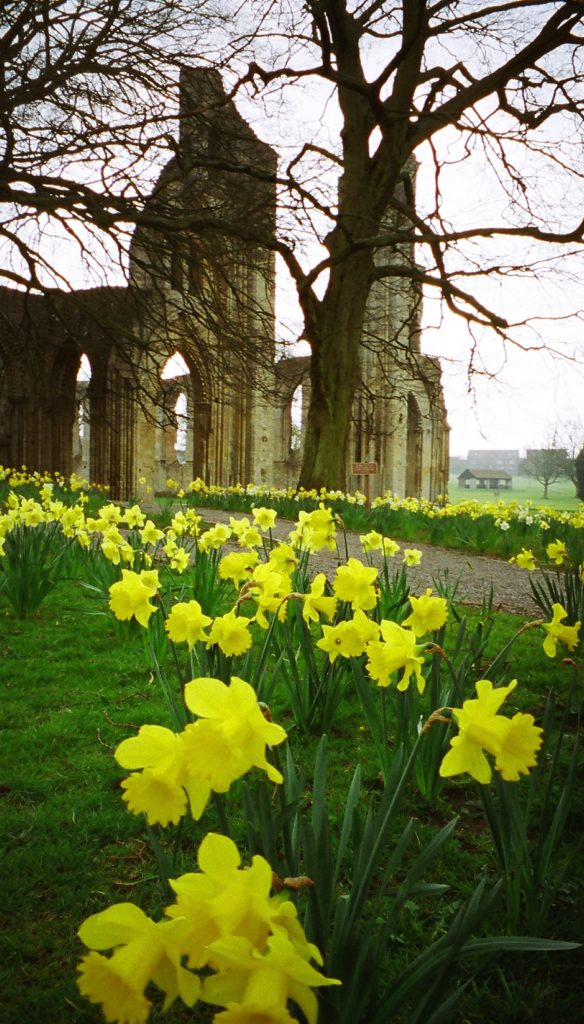Here in the Pacific Northwest, we just got hit with a surprise February snowstorm. My first thought was for our flower garden. Because of some previous irregularly warmer winter days and sun (which I welcomed eagerly), the daffodils had emerged from the wintry mud at the close of the Christmas season. I knew there would be a chance of frost, but never did I imagine snow and ice in February. I figured the flowers were goners.
I have planted bulbs everywhere we’ve lived (and we’ve moved quite a bit). At first, I favored tulips, with their thick, sturdy stems and bold-hued petals against the gray of late winter. It was my husband who requested daffodils. I think they had made an impression on him during his time in England; we have a photograph of a certain field of bright yellow daffodils in the midst of the gray English sky and gray, stone ruins. When we finally bought a house and felt we had settled for a while, I planted several daffodils.
Daffodils seem delicate, compared to other spring bulbs: their stems and leaves are thinner and the petals are paper-thin. Yet the bloom has a curious shape, the kind that inspires one to ponder a Creator. A sculptor could perhaps make a single one, but for thousands to grow year after year and look just as intricate each time is a marvel. And while I love the bold-colored hues of tulips and the pastels of hyacinths, the daffodil is a beacon of light in a dreary part of winter, a snapshot of nature’s beauty and grandeur.
My favorite character of daffodils is their resilience. As this recent snowfall melted, those optimistic daffodils that had sprung too soon were still there, bent over a bit by the weight of the ice. Now the tulips are quickly following suit, and I expect will bloom in a few weeks, in spite of this cold front. When the sun does peak out during this rainy season, the daffodil will lift her head and follow that light. Even though she grows in a darker time, she loves the light. Her life is brief, but radiant.
I’ve definitely been in a funk, a minor depression, the blues, you know. There’s no rational cause or real worry, and it’s not unusual for me this time of year. There are always going to be things around me, whether it’s with family, friends, church, or politics that feel like a debilitating frost over my psyche, over my heart, over my ability to love, hope, and have faith. I absorb the gray around me. These resilient flowers of mid-winter by virtue of their existence glorify their Creator. For we humans, it is an act of the will to turn our face upwards, to orient our lives towards the source of light and warmth. The hope is that we Christians will, as St. Gianna Molla said, be “living examples of the beauty and grandeur of Christianity”: noticeable, resilient, even stubbornly growing, organisms of beauty, standing out against the gray, testifying to the light.
God knows I am not good at that; I like to sit in the mud and say, “Look at all this mud. It’s gross. That sucks.” It seems to be the small things, things that are easily overlooked or forgotten, easily trampled underfoot, that remind me to look upwards. The daffodil is certainly one, a herald of hope for the spring to come.

